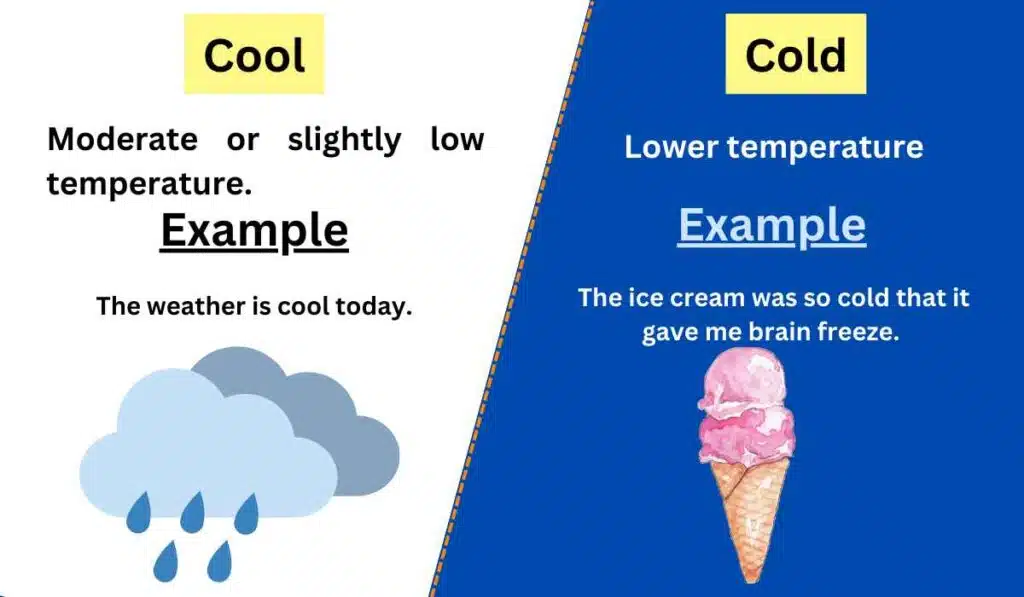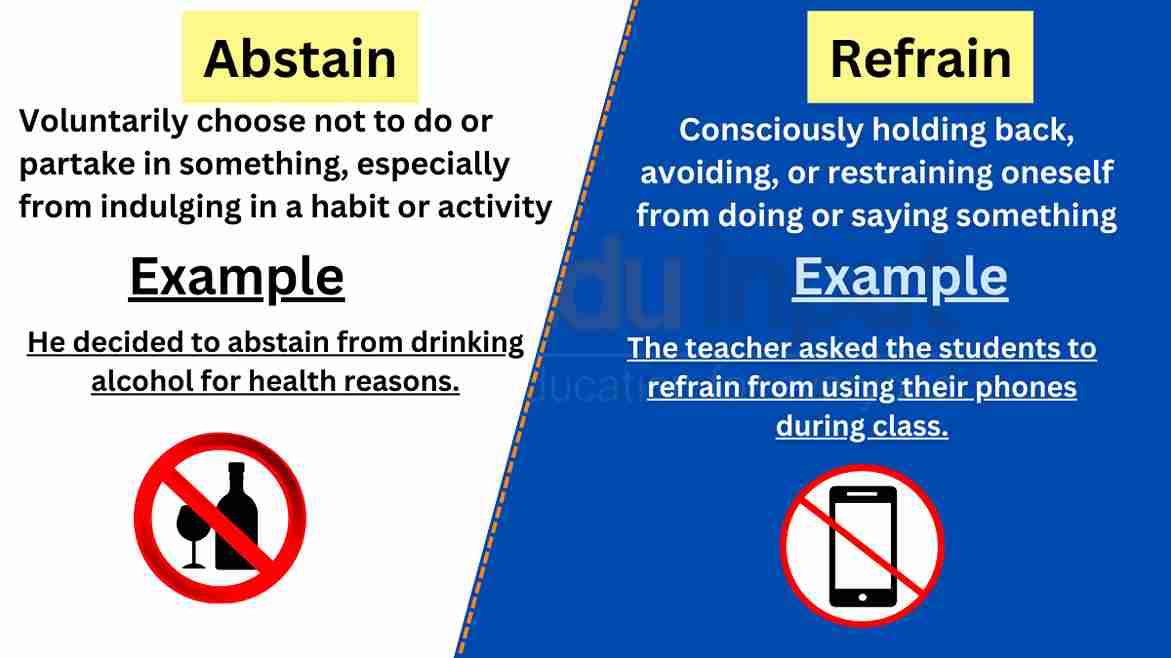Cool vs. Cold-Difference between with examples
In our daily conversations, we often come across the words “cool” and “cold.” While both words describe temperature, they have distinct meanings and contexts of usage.

Understanding the difference between “cool” and “cold” is important to accurately convey the level of temperature or the emotional response associated with them.
In this article, we will explore the meanings of “cool” and “cold,” provide examples to illustrate their usage, and highlight the contrasts between the two. Let’s dive into the nuances of “cool” and “cold.”
Meanings and Examples
Cool Meaning
Adjective: Cool refers to a moderate or slightly low temperature. It can also describe something fashionable, trendy, calm, or composed.
Cool Examples
- The weather today is cool, with a gentle breeze and comfortable temperatures.
- Sarah’s new outfit looks really cool and stylish.
- After the intense workout, the cool water of the pool provided a refreshing sensation.
- Despite the challenging situation, John managed to remain cool and collected.
- The teacher has a cool approach to teaching, making the lessons engaging and enjoyable.
Cold Meaning
Adjective: Cold describes a lower temperature, typically below the level of comfort. It can also refer to a lack of warmth or emotional detachment.
Cold Examples
- It is freezing outside, and the cold wind makes it difficult to stay outside for long.
- The ice cream was so cold that it gave me brain freeze.
- Her hands felt cold as ice when I shook them.
- After the argument, there was a noticeable coldness in their relationship.
- He gave a cold response to her heartfelt apology, showing no sign of forgiveness.
Differences between Cool and Cold
| Criteria | Cool | Cold |
| Meaning | Moderate or slightly low temperature, fashionable, calm | Lower temperature, lack of warmth or emotional detachment |
| Part of Speech | Adjective | Adjective |
| Pronunciation | kool | koʊld |
| Usage | Describing temperature or something stylish, calm | Describing temperature or emotional state |
Usage in a Paragraph
On a pleasant spring day, the weather feels cool, with a gentle breeze that adds to the overall comfort. People enjoy outdoor activities without feeling discomfort due to excessive heat. Meanwhile, in the winter, the temperature drops significantly, and it becomes cold, often accompanied by frost, snow, and biting wind. Cold temperatures require people to bundle up in warm clothing to stay comfortable and protect themselves from the chilling effects. Apart from describing temperature, “cool” is also used to express something fashionable or trendy. For instance, individuals who have a keen sense of style are often described as cool. On the other hand, “cold” can be used metaphorically to depict a lack of warmth, either in interpersonal relationships or in one’s emotional state.
“Cool” and “cold” are words that describe temperature and emotional states. While “cool” indicates a moderate or slightly low temperature, and can also describe something fashionable or calm, “cold” refers to a lower temperature and can describe a lack of warmth or emotional detachment. By understanding the differences between these words, we can effectively communicate the level of temperature or express emotional states accurately. Whether we are describing the weather or discussing personal feelings, using “cool” and “cold” appropriately enhances clarity in communication.







Leave a Reply